#Aladdin 1992 critical
Explore tagged Tumblr posts
Text
I don’t know, what is it with Disney stans and defending the harmful stuff in their favorite trash ass movie like Pocahontas and tangled. Also, Aladdin (though I like the movie and characters, it had a negative impact on how people view people from South and west Asia as well as North Africa) and the hunchback of Notre Dame (I like this movie but the Antiziganism is so bad in the movie. Also, constant use of a slur).
Is it so hard for them to admit that their fav movies can be problematic, and they can acknowledge that? Why jump people for being critical of these movies when they have a point?
27 notes
·
View notes
Text
on fandom orientalism, ft. a quick visual example:

the example on the right is something i drew solely using references of the top results i saw on pinterest upon searching "jotun loki." please don’t roast my inconsistent handwriting
south asian cultures are often jumbled together for white artists of all kinds (authors, artists, movie directors) to create a sense of mystery and make things look "more foreign."
note: this doesn't touch on the antiblack racism in canon jötun designs; this post is primarily about fandom-sourced fetishization. i heavily encourage people to reblog and add onto this post anything i may have missed or added nuance
cut: links on orientalism, in-media examples, how this manifests in fandom-made content
i'd like to start off by saying that this post is a white person telling other white people how to spot orientalism in relation to fiction. i am by no means an expert on any of this, but my goal here is to start creating a less ignorant space that doesn't push people out of fandom.
i'm just trying to stir up more conversations about this and get other white people to think more critically about how they engage with the content they consume. nerd shit should never come with a sacrifice and it's extremely upsetting to see people of color consistently forced out of fandom communities, especially when modern superhero comics began as a way for jewish people to have a voice.
if this post upsets you, i don't want to hear it. don't tell me, "it's not that deep," or, "keep politics out of comics." it is that deep, and superhero comics have always been political. if you have the urge to leave a comment or send an anon about how you don't think it's a big deal, feel free to block me instead, because i don't care and you'll just get blocked anyway 👍
with that out of the way,
Q:
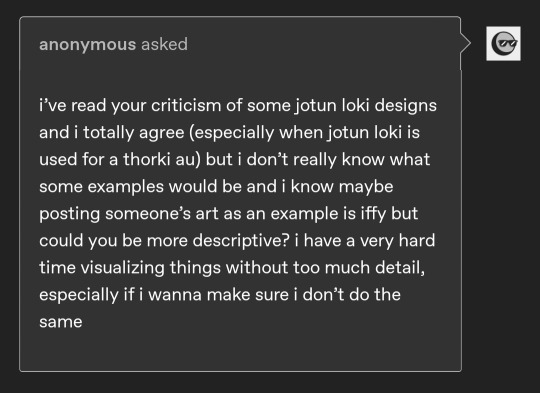
A:
there are countless ways to design a character in a way that makes it clear that they are an alien, or to make them sexy, and there is no excuse to perpetuate stereotype that put real-life people in danger to do so.
"Orientalist paintings and other forms of material culture... depict an 'exotic' and therefore racialized, feminized, and often sexualized culture from a distant land." [¹]
there are so many examples of this in loki fic and art. it's extremely common to see loki depicted as a feminine object of desire. they may have longer hair. clothing that serves more as an accessory than an outfit, that isn't suited to protect them from either the harsh cold of jötunheim or the sunburns one might get when surrounded by reflections of the sun off the snow. draped in jewelry, and in a compromising position.
i'm sure you can imagine how this can get especially out of hand in relation to thorki. i would speak more on thor's presence as both the white aesir prince or the strong barbaric jötun, but as i'm not comfortable consuming thorki content, i don't have enough context to speak on the stereotypes used outside of the art pieces i've seen while searching for jötun loki fanart.
i am, however, confident in saying that orientalism often serves as a device for fan creators to show a contrast between Asgard's white-viking-british-accent-magic-science-elegance. jötunheim, in the comics, is often portrayed as a less intelligent, cutthroat, barbaric, and bloodthirsty culture.
"There was always something unknown and uniquely different about Orients which reinforced the distinction between the European 'us' and Asian 'them.'" [²]
the green link in particular comes with a helpful tool for anyone who might be inexperienced in spotting racist themes in media. if you have trouble being confident that the media in question is orientalism, this link comes with a checklist scale to score how likely it is to be an offensive depiction.
an example that most of you will be familiar with is Disney's Aladdin (1992). the green link goes much more in-depth about the intricacies of Aladdin's orientalism, and i heavily HEAVILY encourage you to read it, as it will help fully grasp the way fetishization and demonization go hand in hand in orientalism.
here, i'd also like to use it as a comparison to show why this loki stuff is honestly... egregious.
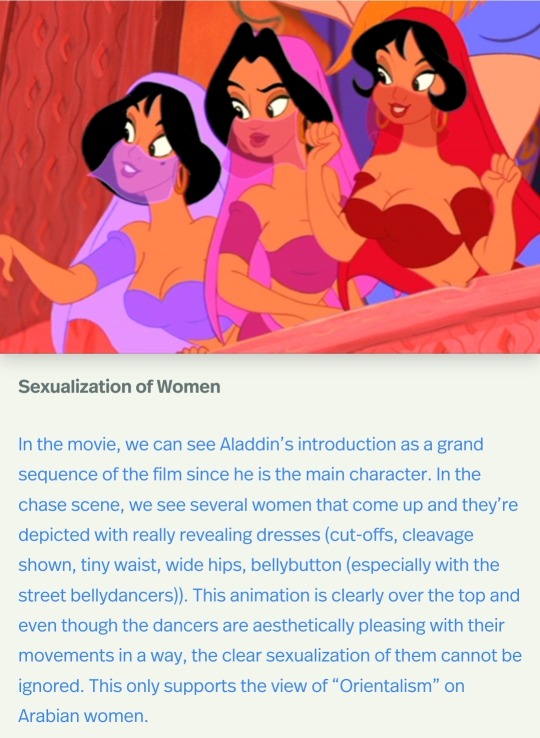

by now, even the visuals here should seem very familiar.
the source goes on to use arranged marriage as an example of a common "trope" in orientalist fiction. as previously stated, i don't consume thorki fiction. however, i am EXTREMELY confident in making the guess that it tends to be a common theme when jötun loki is paired with an aesir thor.
i'd also heavily recommended this article and this wikipedia page, both on the negative and stereotypical portrayals of romani people; loki is a magic user, and i suspect that one of the reasons there is such heavy use of these appropriated, exaggerated, and fetishized themes and visuals is because of the demonization of romani people as tricksters, thieves, and witches.
#orientalism#racism#fandom culture#jotun loki#jötun loki#marvel#jötun loki contest#jotun design party
187 notes
·
View notes
Note
What do you think would be Draxum's favorite Disney movie? Other than The Lion King or Bambi.
Hmm, ignoring the timeline aspect of it-he probably hasn't seen anything made past 1992, considering Bella was too old to watch children's movies at that point and Pax experienced a lot of rapid adultification after the death of his parents and was no longer interested in a lot of kid things, and Draxum wouldn't have watched them of his own volition. (Bella would absolutely be down to watch Disney movies now, but she was one of Those teenagers who were too cool for that) Plus while Draxum will consume human media, (kind of hard not to, especially considering Yokai don't really have much of a TV/movie industry themselves) he's pretty picky about it and would probably be overly critical of Disney and consider it to be a harbinger of intrusive Americanization and commoditization. He let his niece and nephew watch Disney, but he also encouraged them to watch foreign movies and shows just to branch out. If he raised Gale as a child he probably wouldn't have allowed him to watch much Disney at that point. (though if he raised all the turtles I expect he'd eventually give up as the reality of raising four hyper-destructive children who were designed to be hardy and relentless and basically hell on earth came crashing down on him and he would be willing to turn on anything if it meant he could get a break for an hour and a half)
That said! Well, he'd love Mulan. Draxum grew up very close to his mother and the warriors of his tribe skewed more female, so he was surrounded by a bunch of tough Norse ladies and thought that was just how all warriors were. (finding out that humans did not do this probably contributed to his resentment, lol) He loves a good girlboss. Really, a Draxum who raised the turtles would be starved for good female representation, considering they're all boys being raised by gay dads and don't really have any women in their lives. (besides Bella and her endless line of girlfriends) (the first time Leo repeats something misogynistic he heard on Youtube Draxum goes fucking apeshit on his ass) On top of that, Mulan is honestly just a really well done movie. He'd also appreciate the emphasis put on Mulan's brains over her innate talents-she's a badass fighter, of course, she worked very hard for that and deserves to be recognized for it, but the movie makes a point of repeatedly showing how intelligent she is and what a naturally strategic mind she has. She doesn't outfight Shan Yu-she outwits him. Draxum would go absolutely feral over her.
He'd also like Aladdin for similar reasons, his wit and compassion towards others. I feel like he'd also begrudgingly enjoy Robin Williams as Genie. "Well, humans are on the whole abhorrent beings, but this Williams man defied the odds. He is...strangely delightful to behold." He's also 100% that person that criticizes historical and cultural inaccuracies in movies though, and he'd absolutely do that here. Splinter is sitting next to him groaning and telling him just to enjoy the movie and to stop bothering Purple with his lecture about orientalism and actual history about the Islamic golden age.
I feel like he'd also really love The Little Mermaid. No particular reason, just kind of that vibe.
Hmm, what else. This is all Disney Renaissance stuff, because that's what I grew up with. Atlantis, he'd love Atlantis, and he'd bemoan how uncultured humans were for not appreciating it. He'd watch The Emperor's New Groove very begrudgingly, because his kids begged him, and try to hide how much he actually enjoys it. The Incredibles, for obvious reasons. He'd cry at Up. And at Coco.
He'd also like anything in universes where everyone is animals, for obvious reasons. But be like, really really critical of it. "Why does this hippo child need to duck to go through her doorway?! Her house should be built to accommodate animals of her size! Her society has failed her!"
(Draxum is not a fun person to watch movies with)
13 notes
·
View notes
Note
how did disney do treasure planet dirty?
Thank you so much for asking
Story time!
Treasure Planet (2002) is Treasure Island set in space. It was directed by Ron Clements and John Musker. They worked in Disney as directors for a while, and some of their other directive credits include movies such as The Great Mouse Detective (1986), The Little Mermaid (1989), Aladdin (1992), Hercules (1997), and more recently Moana (2016). Before directing those they worked as character animators and writers in other movies, and then one day they went to the at the time chairman of Disney, Jeffrey Katzenberg, and asked him to pretty please let them adapt Treasure Island and set it in space. However, they didn't have the best timing because this was after the release of Black Cauldron (1985), which had flopped bad and they'd worked on as writers.
Jeff said a big nope and had them direct The Great Mouse Detective (1986). And after that movie came out, Clements and Musker asked again, and Jeff instead made them directors for The Little Mermaid (1989) and Aladdin (1992), and after each movie they made, they kept asking about Treasure Planet. By that point Jeff told them that if they directed one more film, Hercules (1997), he'd let them do Treasure Planet. They did and Treasure Planet got the greenlight.
The movie is amazing and I won't go into why to keep this a reasonable length, but one of its feats was how it combined traditional 2d animation, CG animation and deep canvas (a looot of deep canvas). It was very cool, very innovative and veeery expensive.
That's the factual part of the story, now we go into personal opinions and fan theories, which are that basically maaaybe Disney didn't really want to make this movie, and it only got the ok because it was the passion project of their two directors responsible for the Disney Renaissance. Between the movie's budget and the marketing they spent a whopping 180 million to make this movie (Aladdin cost them 28m, The Little Mermaid 40m, Hercules 85m).
However, when Treasure Planet came out in late 2002, it flopped. Another Disney movie that came out earlier that year during the summer and had done amazing was Lilo and Stitch. Great movie too, btw, and the marketing team had made sure people heard about it. Six months before it came out you got ads of Stitch disrupting iconic scenes, McDonalds toys... the whole spiel. Meanwhile Treasure Planet's marketing was a mess and their ads either didn't give out anything about the movie or spoiled a bunch of stuff. And they released the movie in December 2002. Do you know what other movie had released just a couple days before? The second movie about a certain boy wizard whose books were written by an author whose name I shall not utter. Oh, and another veery Christmasy Disney movie, The Santa Clause 2. These two both dominated the box office while Treasure Planet... didn't.
And the thing is that Disney knew. They were well aware that there wasn't much buzz about the movie and that it's sales projections didn't look good, and despite all the money they'd invested on it... they didn't move the release to a date that would help it perform better.
Also, while Treasure Planet's box-office numbers might have been lackluster, the movie received excelled critics and even received an Oscar nomitation for Best Animated Picture.
But why they would set up to fail their own movie?
Well, because then they could avoid doing a sequel. Remember Jeff, the guy that approved Clements and Musker's passion project? He hadn't been with Disney since 1994, and there'd been two other chairmen after him. Any loyalty and passion left for this movie remained with the people working on it, not with the top executive's whose job was to make money, not art.
And here's the tragic kicker: films like A Bug's Life or Monster's Inc, aka 3d movies were doing amazing in the box-office, so Disney wanted to switch directions. By setting the very expensive movie to fail, they avoid doing the promised (and likely just as expensive) sequel that was already in pre-production. Making sure Treasure Planet failed planted the first nail in the coffin where a couple years later they would bury their 2d animation studio. A couple more 2d animated movies later that didn't really do that great either they closed shop for good and switched completely to the 3d animated features we get nowadays.
(Also while the storyboard for the sequel is somewhere in a Disney vault gathering dust, there's some stuff on the internet with rough designs for the sequel and info about the plot and it looked SO GOOD AND THEY CANCELLED AND IT'S BEEN OVER 20 YEARS AND I'M STILL MAD ABOUT IT)
End of story time
(And, if you liked this ramble or wish to learn more about this topic, here's the video where I learned most of this and that also goes into more details about stuff like what deep canvas is and the changes they did to successfully adapt the story)
youtube
#treasure planet#disney#long post#nym's posts#nym's asks#and while i do love that youtube video there is one mistake it says that what premiered in 2002 was HP1 instead of HP2#there might be typos in this but honestly let them be#also thank you so much to the anon that asked this
36 notes
·
View notes
Text
Journey Across the Disneyverse: Third Day
In honor of the 100th anniversary of the Walt Disney Animation Studios, I'm rewatching some of my favorite films from the studio.
This were the ones that I watched today.
1 - Aladdin (1992)
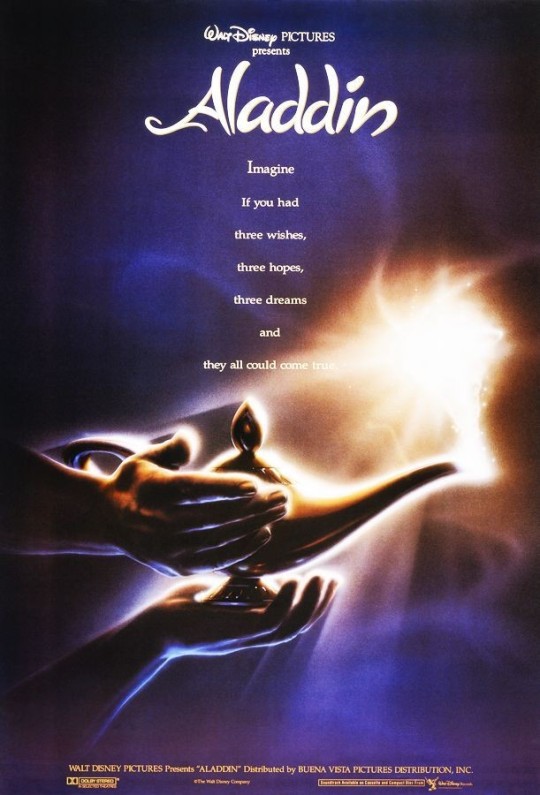
One of my father's favorite Disney films and one that I held a lot of kinship because of that.
It's a very heartfelt and sincere story, even with all the anachronistic jokes. In any other movie, a character like the Genie would be unbelievably annoying, but Robin Williams makes the character so likable and charismatic that in end you want to hear more and more of his celebrity and pop culture jokes.
Now, my favorite random trivia about this movie. In the Brazilian dub, the song Arabian Nights has one lyric that can be translated as "And too many orgies". To my knowledge, no one ever took issue with this lyric.
Right wing evangelical groups swear that the "Good teenager, take out your clothes" made into the Brazilian dub, but the first song literally has the word "orgies" in it, and no one batted an eye.
In Brazil, we have a Disney movie where the word orgy is said, and it's so obvious that the Disney+ subtitles try to cover up the fact by ridiculously trying to gaslight the audience into thinking the lyric is "And too many parties"
2 - Lion King (1994)
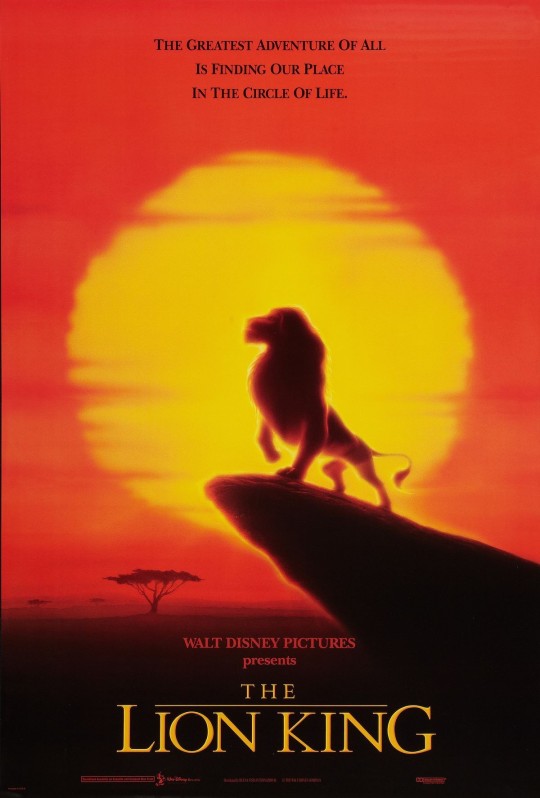
Disney's most epic movie.
Everything about this movie is epic, big, and thunderous.
People often compared this to Hamlet, but I think it's more complicated.
The film runs on a very ancient mythology archetype of son taking revenge on the uncle for killing the father. Heck, Osiris, Set, and Horus from Egyptian Mythology have the same story dynamics as Mufasa, Scar, and Simba. Hamlet itself is inspired by an older Scandinavian legend of a hero king named Anleth.
It's also worth pointing out how in the Shakespeare play, the ghost is a more malevolent presence, and the avenging the dead father is Hamlet's start of darkness, while in Lion King, Mufasa's presence is much more uplifting, and avenging the death father is treated like an rite of passage of sorts, granting Simba maturity.
3 - The Princess and the Frog (2009)

A very underrated film, overshadowed by both Frozen, and to a lesser extent, Tangled as well.
Although I agree with the criticism of the first African-American Disney Princess staying most of the film as a frog, the frog transformation is so crucial to the plot, than changing it would create a whole, completely different film.
There something very charming about setting a fairy tale so late in the US during the roaring twenties. I love how the film incorporates many fairy tale archetypes like the Good King, the fairy godmother, the wicked sorcerer with the residents of New Orleans. New Orleans looks beautiful and bigger than life on this film, and thanks to the fairy tale archetypes and magical elements, the city becomes an alternative, magical world.
Ray's death continues to be one of Disney's bravest creative choice in the last twenty years. They could bring him back with magic like they did so many times, but they manage to create a beautiful and bittersweet farewell to him.
@ariel-seagull-wings @thealmightyemprex @tamisdava2 @natache @the-gentile-folklorist @the-blue-fairie @thelittlehansy @mask131 @princesssarisa @angelixgutz
14 notes
·
View notes
Text
Musker has collaborated with fellow director Ron Clements on several Disney animated features, including “The Great Mouse Detective” (1986), “The Little Mermaid” (1989), “Aladdin” (1992), “Hercules” (1997), “Treasure Planet” (2002) and “Moana” (2016). Musker and Clements also helmed 2009’s “The Princess and the Frog,” which was met with mixed reception over the depiction of Disney’s first Black princess.
“We weren’t trying to be woke, although I understand the criticism,” Musker said of “The Princess and the Frog.”
0 notes
Link
Check out this listing I just added to my Poshmark closet: J Worthington Disney's Pinocchio 8x10 Promotional Photograph.
0 notes
Text
Stereotypes portrayed in television affect society by creating and trivializing misconceptions of certain cultures.
Is television merely a reflection of society, or does it hold the power to shape our perceptions, influencing our collective understanding and daily misconceptions? As Mark Twain once said, 'It's easier to fool people than to convince them that they have been fooled.' Not only is television often regarded as a mirror reflecting the world around us, but it is also a powerful source that reaches millions of viewers every day. In its characters, storylines, and cultural references, television plays an important role in shaping our perceptions and beliefs. In this text however, you will see how stereotypes portrayed on the screen affect society.
How stereotypes are portrayed in the cinematic industry is a tragedy. The history of stereotypes in cinema has occured for much time now, all in all, a major cultural ignorance. White actors often are resorted to Blackface, Yellowface, or Red Face makeup when portraying non-white characters, a practice that went on for most of the 20th century. The perpetuation of stereotypes extended to characters like the Black or Gay Best Friend, who often served as a supporting figure to unravel the white lead characters' romantic entanglements and provide comedy and relief to the plot. These characters were frequently portrayed as one-dimensional and couldn't even be given the "privilege of an individual identity".
To understand ethnocentrism in this context, it is crucial to define it as the belief that one's culture is superior and to differentiate it from stereotypes, which are biased generalizations. Although speaking of stereotypes, the concept of ethnocentrism, which entails the belief that one's own culture is superior, applying one's cultural truths above others, plays a significant role in this cinematic context. Stereotypes in films involve generalizations about particular groups, often portrayed in unfavorable, exaggerated, or oversimplified ways. Addressing this topic requires avoiding the use of stereotypes in films to prevent the perpetuation of biased cultural images. A term mentioned in the Berkley education site that resembles this term is heuristics, which are mental shortcuts essential for navigating the world efficiently, although in one hand they are valuable for practical decision-making, on the other they can also lead to harmful assumptions about individuals, particularly in the context of racial stereotypes. For instance, the opening song "Arabian Nights" in Disney's 1992 film "Aladdin" raised concerns due to its portrayal of Arab culture as "barbaric." Similar examples such as hollywood productions: Mean girls, the simpsons, Ginny and Georgia, etc. reinforce the need to bring awareness to the use of ethnocentrism in cinema.
The issue of diversity in Hollywood, particularly in director roles, persists, reinforcing the implementation of strategies such as dedicated committees, hiring plans and staff positions aimed at enhancing diversity both on and off-screen. This diversity remains a critical concern, especially regarding the underrepresentation of people of color in managerial positions within the industry. Alltogether we can implement inclusive hiring practices, improve diversity programs, and enhance retention efforts. The film industry can foster a more representative and inclusive environment, aligning with the evolving diversity of the world.
With all things considered, the influence of television in shaping society's perceptions and beliefs is undeniable. However, the consequences of these stereotypes are bigger, as they can lead to the distortion of cultures, causing damage to how we view and interact with others. As we have explored the history of stereotypes in cinema, the role of ethnocentrism in perpetuating biased generalizations, and the ongoing issue of diversity in Hollywood, it is evident that stereotypes portrayed on screen have a extreme impact on our understanding of cultures. To move forward, we must continue to challenge these stereotypes and fight for accurate representation in the media. The question remains: Can the entertainment industry evolve to better reflect the diverse world we live in, or will it keep reinforcing harmful stereotypes?
0 notes
Text
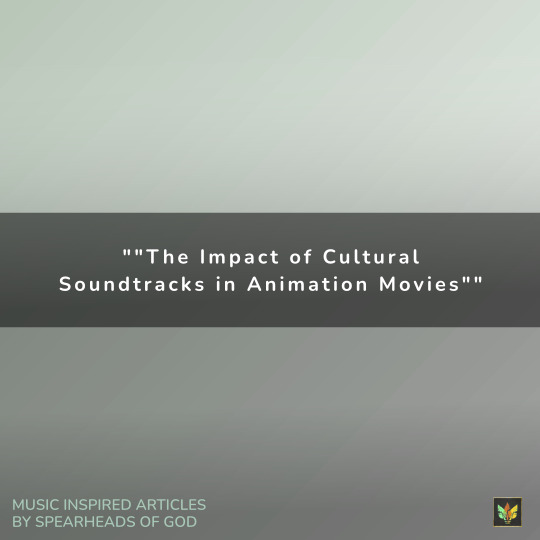
Cultural Soundtracks in Animation https://spearheadsofgod.com/cultural-soundtracks-in-animation/?feed_id=729 We are thrilled to unveil our latest analysis, fresh from the figurative production line. Your feedback is eagerly awaited and we endeavor to navigate you through a gripping and illuminating journey within our discourse! Animation movies have an innate ability to transcend boundaries and captivate audiences of all ages. Central to their enchantment lies in the synchronization of visual elements with soundtracks. The title of this article, “The Impact of Cultural Soundtracks in Animation Movies,” gives us a lens to explore how incorporating cultural elements in soundtracks has not only enhanced the richness of animation movies but has also played an instrumental role in bridging cultural divides and fostering global awareness. The Harmonious Blend of Culture and SoundIn the 1990s, animation giants Disney revolutionized the industry by integrating cultural soundtracks into movies. The movie “Aladdin” (1992), for instance, is adorned with Middle Eastern music, which is a fundamental part of Arabian culture. The soundtracks use traditional instruments like the Oud and Qanun, and the melodic structure is based on Maqam scales, which is a characteristic of Middle Eastern music. Another example is “The Lion King” (1994), where the soundtrack reverberates with African rhythms and choruses. Hans Zimmer, the composer, went to great lengths to ensure authenticity by incorporating Lebo M., a South African composer, and using African instruments like the Marimba and Djembe. Cultural Education and RepresentationAnimation movies with culturally-rich soundtracks serve as an educational tool for viewers. In “Mulan” (1998), the soundtracks draw heavily from traditional Chinese music, which uses the pentatonic scale. This introduces viewers to a different kind of tonal palette compared to the heptatonic or diatonic scales predominantly used in Western music. Similarly, “Coco” (2017), a movie by Pixar, employs Mexican music to weave a story around the traditional Mexican holiday, Día de Muertos. By using Mariachi style and instruments like guitarrón and vihuela, it acquaints the audience with Mexican culture and traditions. These movies foster cultural representation and provide viewers with insights into the rich tapestry of different cultures. Commercial Success and Global AppealThere is a significant positive correlation between the use of cultural soundtracks in animation movies and their commercial success. Box office hits such as “Moana” (2016), which incorporates Polynesian music, and “Coco”, are testaments to the global appeal of cultural soundtracks. Research shows that movies with culturally authentic soundtracks tend to do well in international markets, as they appeal to a broader audience. The music evokes a sense of familiarity among the native audience while providing a novel experience to others. The Power of Music in StorytellingThe cultural soundtracks in animation movies do not just act as a backdrop but are often integral to the storytelling. They convey emotions, depict settings, and often progress the story. For example, in “Spirited Away” (2001), a Japanese animated film by Studio Ghibli, the soundtrack composed by Joe Hisaishi incorporates traditional Japanese instruments like the Shamisen and Shinobue. The music is not merely complementary but is integral to understanding the characters and the ethereal world they inhabit. Addressing Cultural AppropriationWhile cultural soundtracks in animation movies have their benefits, it is essential to address the issue of cultural appropriation. When elements of a minority culture are used outside of their cultural context, especially without proper understanding or respect, it can be problematic. For example, the initial release of “Aladdin” faced criticism for the portrayal of Arabian culture. It is crucial for filmmakers to research and approach cultural elements with sensitivity and respect to avoid misrepresentation.
ConclusionThe incorporation of cultural soundtracks in animation movies has undeniably added a new dimension to the cinematic experience. From Disney’s “The Lion King” to Studio Ghibli’s “Spirited Away”, the harmonious blend of culture and sound has not only enchanted audiences but has also played an instrumental role in educating them. Through the use of traditional instruments, scales, and rhythms, these soundtracks transport viewers to different parts of the world, allowing them to experience various cultures from the comfort of their seats. Moreover, this integration of cultural soundtracks has proved to be a catalyst for commercial success. The global appeal generated by these soundtracks has been evident in the box office numbers. Audiences around the world have shown a keen interest in diverse cultural content, which in turn has influenced the industry to produce more culturally enriched animation movies. However, with this power to influence and educate, comes the responsibility of respectful representation. Filmmakers must be vigilant to avoid the pitfalls of cultural appropriation. In-depth research, consultation with cultural experts, and involvement of artists from the cultures being represented are key to achieving authenticity. Another interesting avenue that the industry has taken is the localization of soundtracks. This entails adapting the music to suit the tastes and preferences of different cultures, thus further enhancing relatability and appeal. An example can be seen in Disney's “Frozen”, where the song “Let It Go” was adapted into over 40 languages, each rendition incorporating elements of the local culture. In conclusion, cultural soundtracks in animation movies are a potent tool for storytelling, education, cultural exchange, and commercial success. However, like any powerful tool, they must be wielded with care and respect for the cultures they represent. As the world becomes more interconnected, and the exchange of cultures continues to enrich our global tapestry, one can only expect the role of cultural soundtracks in animation movies to become even more prominent. What are your thoughts and opinions on the subject? Do you believe that the incorporation of cultural soundtracks in animation movies has a broader impact beyond entertainment? Is there a particular movie that touched you through its cultural representation in music? Engage in the conversation and share your insights.
#Articles#filmscorereview#filmscores#filmsoundtrack#musicanalysis#musiccomposition#musiccritique#musicexploration#musicinmovies#musicinterpretation#musictheory#scoreassessment#scoreevaluation#scorereview#soundtrackanalysis#soundtrackbreakdown#soundtrackstudy
0 notes
Text
People on twitter see an issue with raya being in the lineup because her movie sucks. Yet they see no issue with jasmine, Pocahontas and rapunzel being in the lineup when their movies are offensive? Also could be harmful to a certain group of people🤨?
Like I said before raya’s movie sucked ass but at least raya’s story wasn’t based on a real life child who was abused or had a antisemitic villain mixed in with ageism and sexism…
#mine#anti tangled#anti Disney Pocahontas#Aladdin 1992 critical#anti twitter#raya and the last dragon sucked ass#but I would have her in the lineup rather than those three I mentioned#disney princess
13 notes
·
View notes
Text
April 2023 Monthly Media
* = Rewatch/reread
Anime/Cartoons
Bob's Burgers 13.18-13.20
Books
Steel's Edge by Ilona Andrews
Dead Man in a Ditch by Luke Arnold
One Foot in the Fade by Luke Arnold
Saith Death's Daughter by C. S. E. Cooney
Solomon's Crown by Natasha Siegel
Manga/Comics
Dungeon Meshi by Ryōko Kui 1-8
The Cardboard Kingdom by Chad Sell
Grandmaster of Demonic Cultivation 1- 3 by Mo Xiang Tong Xiu
The Scum Villain's Self-Saving System 2-3 by Mo Xiang Tong Xiu
Oglaf (ongoing webcomic)
Order of the Stick (ongoing webcomic)
Wilde Life (ongoing webcomic)
Movies
My Cousin Vinny (1992)
Podcasts
Dungeons and Daddies
Not Another D&D Podcast
Worlds Beyond Number
Theater/Concerts
Aladdin (National Theater)
Darren Hayes: Do You Remember? (Sixth & I)
The Mountain Goats (Union Transfer)
TV Shows/Web Series
Abbott Elementary 2.20-2.22
Bad Buddy 1-2
Critical Role 3.54-3.56
Dimension 20: Neverafter 19-20
Extraordinary Attorney Woo 1-16
Ghosts CBS 2.19-2.20
Next in Fashion 2.07-2.10
Next Level Chef 2.09-2.12
Survivor 44.06-44.09
0 notes
Text
One Hundred Years Of Walt Disney

Disney movies have been entertaining audiences for almost a century, with a long and rich history that spans across generations. Starting from the iconic animated shorts of the 1920s, Disney has evolved into a multimedia giant, producing some of the most beloved movies of all time, acquiring other studios and franchises, and launching its own streaming service, Disney+.
The Early Years
Disney's first foray into animated films began in the 1930s, with the release of classics such as "Snow White and the Seven Dwarfs" (1937), "Pinocchio" (1940), and "Fantasia" (1940). These films revolutionized the animation industry, paving the way for future animated movies and solidifying Disney's reputation as a leading studio.
During this era, Disney also produced a series of live-action films, such as "Treasure Island" (1950), "20,000 Leagues Under the Sea" (1954), and "Mary Poppins" (1964). These movies helped establish Disney as a multifaceted studio, capable of producing both animated and live-action films.
The Disney Renaissance
In the late 1980s and early 1990s, Disney experienced a creative resurgence, known as the "Disney Renaissance." During this period, Disney released a string of critically acclaimed and commercially successful animated movies, including "The Little Mermaid" (1989), "Beauty and the Beast" (1991), "Aladdin" (1992), "The Lion King" (1994), and "Pocahontas" (1995).
These films were notable for their high production values, memorable songs, and engaging stories, and they helped solidify Disney's status as the king of animation.
The Modern Era
In recent years, Disney has continued to produce hit animated films, such as "Frozen" (2013) and "Moana" (2016). However, the studio has also expanded into other genres, producing live-action remakes of its classic animated films, such as "The Jungle Book" (2016) and "The Lion King" (2019).
Additionally, Disney has acquired other studios and franchises, such as Pixar (2006), Marvel (2009), Lucasfilm (2012), and 20th Century Fox (2019). These acquisitions have allowed Disney to diversify its portfolio, producing a wide range of films, from superhero blockbusters to sci-fi epics.

Disney+ and the Future
In 2019, Disney launched its own streaming service, Disney+. The service offers a vast library of Disney movies and TV shows, as well as exclusive content, such as original series set in the Star Wars and Marvel universes.
Disney+ has proven to be a massive success, with millions of subscribers worldwide. The service has also allowed Disney to bypass traditional distribution channels, giving the studio greater control over its content and revenue streams.
Inclusivity and Diversity
In recent years, Disney has made a concerted effort to promote inclusivity and diversity in its movies. This includes featuring more diverse characters and storylines in its films, as well as hiring more diverse talent behind the scenes.
For example, "Moana" features a Polynesian protagonist and a predominantly Polynesian cast and crew, while "Black Panther" (2018) features a predominantly African American cast and crew.
Additionally, Disney has included LGBTQ+ characters in some of its recent films, such as "Beauty and the Beast" (2017) and "Onward" (2020) and has promised to include more such characters in future projects.
Conclusion
Overall, Disney movies have played an important role in popular culture, entertaining audiences of all ages for nearly a century. From its early animated shorts to its recent blockbusters and streaming service, Disney+. Disney has continued to innovate and adapt to changing times.
One of the keys to Disney's success is its ability to create timeless stories and characters that resonate with audiences across generations. Many of its classic animated films, such as "Snow White and the Seven Dwarfs" and "Cinderella" (1950), are still beloved by audiences today.
At the same time, Disney has also been able to evolve and expand its offerings, producing a wide range of films and TV shows that cater to different audiences and genres.
Additionally, Disney's commitment to diversity and inclusivity is a positive step towards creating more representative and inclusive media for all audiences. By featuring more diverse characters and storylines, Disney is able to better reflect the world we live in and connect with a wider range of viewers.
Looking ahead, Disney has a number of exciting projects in the works, including upcoming releases such as "Peter Pan & Wendy," "Indiana Jones & the dial of destiny," "The Marvels," and “Inside Out 2”. With its vast resources and creative talent, Disney is well-positioned to continue entertaining audiences for years to come.
1 note
·
View note
Text
Holidays 4.13
Holidays
Aerosmith Day (Massachusetts)
American Elephant Day
Auslan Day (Australia)
Beauty Peace Day
Celebrate Teen Literature Day
Day of the Dead (Elder Scrolls)
Environmental Protection Day
Feast of Rotten Endings
413 Day (Arkansas)
Functional Neurological Disorder (FND) International Awareness Day
Homestuck Day
Huguenot Day (France)
Ides of April (Ancient Rome)
International Campus & Community Day
International Creativity & Innovation Day
International Day of the Kiss
International Functional Neurological Disorder Awareness Day
International Imposter Syndrome Awareness Day
International Jaat Day (India)
International Plant Appreciation Day
International Rock & Roll Day
International Special Librarian’s Day
John Hanson Day (Maryland)
Katyn Memorial Day (Poland)
National Boot Day
National Borinqueneers Day
National Hippy Day
National Japanese Spitz Day
National Kiss Your Homies Day
National PhiliShui Day
National Silly Earring Day
National Sticker Day
National Theresa Day
Neil Banging Out the Tunes Day
Scrabble Day
Silent Spring Day
Sinhala & Tamil New Year’s Eve (Sri Lanka)
Songkran (Thailand) [thru 4.15] (a.k.a. …
Bangla New Year
Bisket Jatra (Bangladesh, Cambodia, India, Laos, Myanmar, Nepal, Singapore, Sri Lanka, Thailand)
Chiang Mai Songkran
Tamil New Year
Thai New Year
Sterile Packaging Day
Swiftie Day
Teacher’s Day (Ecuador)
Thomas Jefferson Day
Unfairly Prosecuted Persons Day (Slovakia)
Western Mass Day (Massachusetts)
World Microscope Day
World Sarcoidosis Day
World’s Day of Remembrance for Victims of Katyn Massacre
Food & Drink Celebrations
Day to Give Thanks for Fish and Seafood
National Make Lunch Count Day
National Peach Cobbler Day
2nd Thursday in April
Global Remanufacturing Day [2nd Thursday]
World Civility Day [2nd Thursday]
Independence Days
Adammia (Declared; 2013) [unrecognized]
Mensa Ann (Declared; 2019) [unrecognized]
Varnland (Declared; 1991) [unrecognized]
Winterspell (Declared; 2017) [unrecognized]
Feast Days
Alfarbot: Alfheim Day (Pagan)
Believe in Fairies Day (Pastafarian)
Bill Hicks Day (Church of the SubGenius; Saint)
Caradoc (Christian; Saint)
Elizablecccch Arden (Muppetism)
Festival of Jupiter Victor (Ancient Rome)
Festival of Libertas (Ancient Roman personification of freedom and political liberty)
Guinoch of Scotland (Christian; Saint)
Hermenegild (Christian; Saint)
Ida of Louvain (Christian; Saint)
James Ensor (Artology)
Libertas (Old Roman Goddess of Liberty)
Martin I, Pope (Christian; Saint)
Poshui Jie begins (Water Splashing Festival; China)
Ptolemy (Positivist; Saint)
Thomas Lawrence (Artology)
Vaisakhi (Sikh spring grain harvest festival)
Vishnu (Pondicherry, India; Hindu)
Yayoi Matsuri (Nikko, Japan; 5-Day Spring Festival)
Lucky & Unlucky Days
Prime Number Day: 103 [27 of 72]
Shakku (赤口 Japan) [Bad luck all day, except at noon.]
Premieres
Aladdin Sane, by David Bowie (Album; 1973)
Bedeviled Rabbit (WB Cartoon; 1957)
The Big Bad Wolf (Disney Cartoon; 1934)
Black Rose, by Thin Lizzy (Album; 1979)
Bridget Jones’s Diary (Film; 2001)
Brown Sugar, by The Rolling Stones (Song; 1971)
Bulldog Drummond (Radio Series; 1941)
Casino Royale, by Ian Fleming (Novel; 1953) [James Bond #1]
Catch a Fire, by Bob Marley (Album; 1973)
Critic’s Choice (Film; 1963)
Daltrey, by Roger Daltrey (Album; 1973)
Echo, by Tom Petty & the Heartbreakers (Album; 1999)
Messiah, by George Frederic Handel (Oratorio; 1742)
Mickey’s Kangaroo (Disney Cartoon; 1935)
The One Minute Manager, by Kennth Blanchard and Spencer Johnson (Book; 1983)
Rampage (Film; 2018)
Rising Sun, by Michael Crichton (Novel; 1992)
Safe at Home! (Film; 1962)
Swing Shift (Film; 1984)
Tango in the Night, by Fleetwood Mac (Album; 1987)
12 Angry Men (Film; 1957)
Unbroken, by Laura Hillenbrand (Historic Novel; 2012)
Today’s Name Days
Hermenegild, Ida, Martin (Austria)
Ida, Martin (Croatia)
Aleš (Czech Republic)
Justinus (Denmark)
Tarvi, Tarvo (Estonia)
Tellervo (Finland)
Ida (France)
Hermenegil, Ida, Gilda, Martin (Germany)
Gerontios (Greece)
Ida (Hungary)
Ermenegildo, Martino (Italy)
Egils, Jagailis, Justins, Justs, Nauris (Latvia)
Algaudė, Ida, Mingaudas (Lithuania)
Asta, Astrid (Norway)
Hermenegild, Hermenegilda, Ida, Jan, Justyn, Małgorzata, Przemysł, Przemysław (Poland)
Artemon (Romania)
Aleš (Slovakia)
Hermenegildo, Martín (Spain)
Artur, Douglas (Sweden)
Slavka, Yaroslava (Ukraine)
Thom, Thomas, Thomasina, Thompson, Tom, Tomas, Tommie, Tommy, Twain (USA)
Today is Also…
Day of Year: Day 103 of 2024; 262 days remaining in the year
ISO: Day 4 of week 15 of 2023
Celtic Tree Calendar: Fearn (Alder) [Day 26 of 28]
Chinese: Second Month 2 (Gui-Mao), Day 23 (Xin-Chou)
Chinese Year of the: Rabbit 4721 (until February 10, 2024)
Hebrew: 22 Nisan 5783
Islamic: 22 Ramadan 1444
J Cal: 12 Aqua; Fiveday [12 of 30]
Julian: 31 March 2023
Moon: 46%: Waning Crescent
Positivist: 19 Archimedes (4th Month) [Ptolemy]
Runic Half Month: Man (Human Being) [Day 4 of 15]
Season: Spring (Day 25 of 90)
Zodiac: Aries (Day 24 of 30)
1 note
·
View note
Text
Holidays 4.13
Holidays
Aerosmith Day (Massachusetts)
American Elephant Day
Auslan Day (Australia)
Beauty Peace Day
Celebrate Teen Literature Day
Day of the Dead (Elder Scrolls)
Environmental Protection Day
Feast of Rotten Endings
413 Day (Arkansas)
Functional Neurological Disorder (FND) International Awareness Day
Homestuck Day
Huguenot Day (France)
Ides of April (Ancient Rome)
International Campus & Community Day
International Creativity & Innovation Day
International Day of the Kiss
International Functional Neurological Disorder Awareness Day
International Imposter Syndrome Awareness Day
International Jaat Day (India)
International Plant Appreciation Day
International Rock & Roll Day
International Special Librarian’s Day
John Hanson Day (Maryland)
Katyn Memorial Day (Poland)
National Boot Day
National Borinqueneers Day
National Hippy Day
National Japanese Spitz Day
National Kiss Your Homies Day
National PhiliShui Day
National Silly Earring Day
National Sticker Day
National Theresa Day
Neil Banging Out the Tunes Day
Scrabble Day
Silent Spring Day
Sinhala & Tamil New Year’s Eve (Sri Lanka)
Songkran (Thailand) [thru 4.15] (a.k.a. …
Bangla New Year
Bisket Jatra (Bangladesh, Cambodia, India, Laos, Myanmar, Nepal, Singapore, Sri Lanka, Thailand)
Chiang Mai Songkran
Tamil New Year
Thai New Year
Sterile Packaging Day
Swiftie Day
Teacher’s Day (Ecuador)
Thomas Jefferson Day
Unfairly Prosecuted Persons Day (Slovakia)
Western Mass Day (Massachusetts)
World Microscope Day
World Sarcoidosis Day
World’s Day of Remembrance for Victims of Katyn Massacre
Food & Drink Celebrations
Day to Give Thanks for Fish and Seafood
National Make Lunch Count Day
National Peach Cobbler Day
2nd Thursday in April
Global Remanufacturing Day [2nd Thursday]
World Civility Day [2nd Thursday]
Independence Days
Adammia (Declared; 2013) [unrecognized]
Mensa Ann (Declared; 2019) [unrecognized]
Varnland (Declared; 1991) [unrecognized]
Winterspell (Declared; 2017) [unrecognized]
Feast Days
Alfarbot: Alfheim Day (Pagan)
Believe in Fairies Day (Pastafarian)
Bill Hicks Day (Church of the SubGenius; Saint)
Caradoc (Christian; Saint)
Elizablecccch Arden (Muppetism)
Festival of Jupiter Victor (Ancient Rome)
Festival of Libertas (Ancient Roman personification of freedom and political liberty)
Guinoch of Scotland (Christian; Saint)
Hermenegild (Christian; Saint)
Ida of Louvain (Christian; Saint)
James Ensor (Artology)
Libertas (Old Roman Goddess of Liberty)
Martin I, Pope (Christian; Saint)
Poshui Jie begins (Water Splashing Festival; China)
Ptolemy (Positivist; Saint)
Thomas Lawrence (Artology)
Vaisakhi (Sikh spring grain harvest festival)
Vishnu (Pondicherry, India; Hindu)
Yayoi Matsuri (Nikko, Japan; 5-Day Spring Festival)
Lucky & Unlucky Days
Prime Number Day: 103 [27 of 72]
Shakku (赤口 Japan) [Bad luck all day, except at noon.]
Premieres
Aladdin Sane, by David Bowie (Album; 1973)
Bedeviled Rabbit (WB Cartoon; 1957)
The Big Bad Wolf (Disney Cartoon; 1934)
Black Rose, by Thin Lizzy (Album; 1979)
Bridget Jones’s Diary (Film; 2001)
Brown Sugar, by The Rolling Stones (Song; 1971)
Bulldog Drummond (Radio Series; 1941)
Casino Royale, by Ian Fleming (Novel; 1953) [James Bond #1]
Catch a Fire, by Bob Marley (Album; 1973)
Critic’s Choice (Film; 1963)
Daltrey, by Roger Daltrey (Album; 1973)
Echo, by Tom Petty & the Heartbreakers (Album; 1999)
Messiah, by George Frederic Handel (Oratorio; 1742)
Mickey’s Kangaroo (Disney Cartoon; 1935)
The One Minute Manager, by Kennth Blanchard and Spencer Johnson (Book; 1983)
Rampage (Film; 2018)
Rising Sun, by Michael Crichton (Novel; 1992)
Safe at Home! (Film; 1962)
Swing Shift (Film; 1984)
Tango in the Night, by Fleetwood Mac (Album; 1987)
12 Angry Men (Film; 1957)
Unbroken, by Laura Hillenbrand (Historic Novel; 2012)
Today’s Name Days
Hermenegild, Ida, Martin (Austria)
Ida, Martin (Croatia)
Aleš (Czech Republic)
Justinus (Denmark)
Tarvi, Tarvo (Estonia)
Tellervo (Finland)
Ida (France)
Hermenegil, Ida, Gilda, Martin (Germany)
Gerontios (Greece)
Ida (Hungary)
Ermenegildo, Martino (Italy)
Egils, Jagailis, Justins, Justs, Nauris (Latvia)
Algaudė, Ida, Mingaudas (Lithuania)
Asta, Astrid (Norway)
Hermenegild, Hermenegilda, Ida, Jan, Justyn, Małgorzata, Przemysł, Przemysław (Poland)
Artemon (Romania)
Aleš (Slovakia)
Hermenegildo, Martín (Spain)
Artur, Douglas (Sweden)
Slavka, Yaroslava (Ukraine)
Thom, Thomas, Thomasina, Thompson, Tom, Tomas, Tommie, Tommy, Twain (USA)
Today is Also…
Day of Year: Day 103 of 2024; 262 days remaining in the year
ISO: Day 4 of week 15 of 2023
Celtic Tree Calendar: Fearn (Alder) [Day 26 of 28]
Chinese: Second Month 2 (Gui-Mao), Day 23 (Xin-Chou)
Chinese Year of the: Rabbit 4721 (until February 10, 2024)
Hebrew: 22 Nisan 5783
Islamic: 22 Ramadan 1444
J Cal: 12 Aqua; Fiveday [12 of 30]
Julian: 31 March 2023
Moon: 46%: Waning Crescent
Positivist: 19 Archimedes (4th Month) [Ptolemy]
Runic Half Month: Man (Human Being) [Day 4 of 15]
Season: Spring (Day 25 of 90)
Zodiac: Aries (Day 24 of 30)
0 notes
Text
In 1992 disney mixed random cultures from Asian countries and called it middle eastern representation
In 2021 they mixed cultures from SEA countries and called it representation
Gotta love how they never learn
#what does sea or middle east rep even mean#they are aware that they're full of countries with different cultures right#RIGHT?!#aladdín#aladdin#aladdin 1992#disney aladdin#disney#disney movies#raya#raya and the last dragon#raya critical#ratld#disney ratld#ratld critical#anti aladdin#anti disney#disney criticism#disney critical#disney racism#disney raya#raya disney#aladdin disney#princess jasmine#jasmine#princess raya#sisu#fuck disney
31 notes
·
View notes
Text
I gotta say something about this trend because it rubs me wrong
🌼Don't use my post to bully crew members and actors please!🌼
I know there's a post floating around here that talks about the erasure of monoracial/unambiguously black female characters, explicitly black/deep-toned women are now being portrayed by mixed/light-skinned actresses; or, if they're animated, depicted with lighter skin. I'm starting to notice that trend in other media not just in black women (although that issue is unfortunately common in that range).
Take Spirit for example. The first movie was a commentary on the effects of Manifest Destiny partly through the eyes of a Lakota man named Little Creek.

But in the spinoff sequels the new protagonist is a biracial (Mexican and White) light skinned girl named Lucky.

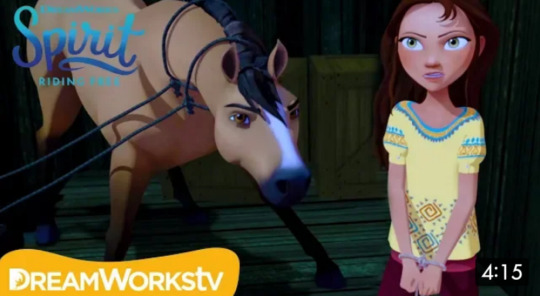
Now the plot is a typical "Girl and her Horse movie" where she has to save her wealthy father's railroad line. Which is an huge slap in the face of the messages set by the first movie because railroad lines were symbolic of the destructive nature of colonialism. There's a scene in the original where Spirit and Little Creek thwart the construction of the railroad as a defiant act against genocide. Lucky even ends up taming the son of Spirit & Little Creek's personal horse Rain - again a huge slap in the face - whereas Little Creek chose to let Rain go, reinforcing the theme of freedom. Having some girl who directly benefitted from colonialism&privilege do the exact opposite of that shows an utter misunderstanding of the first film.
Recently Fate the Winx Saga casted a light skinned actress to portray Flora.

Again, no hate toward her, and the franchise is no stranger to whitewashing - but this is another example of media whitewashing a brown-skinned character and removing unambiguous traits to be more acceptable.
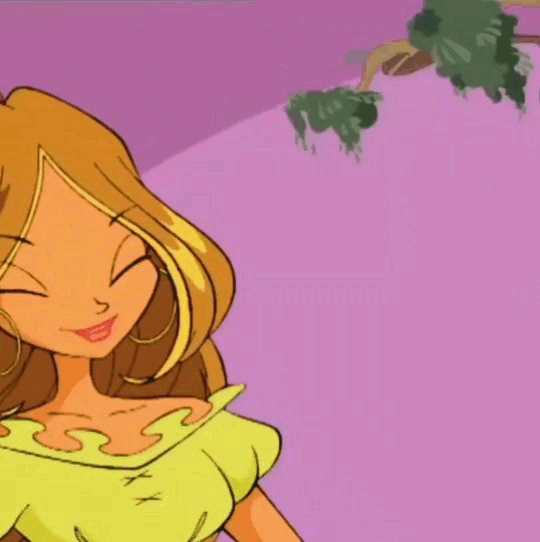
Before that Fate flat out replaced her with a white woman, only to backtrack by saying that Terra is actually her cousin.

Disney is also guilty of this, casting casting lightskinned actresses to play Kamala and Jasmine:
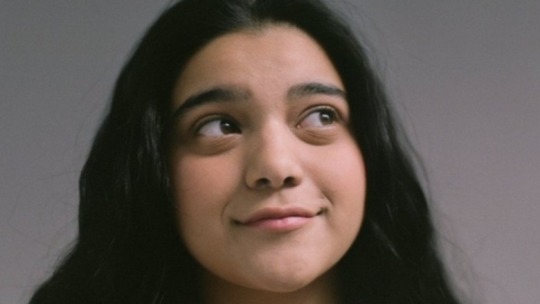
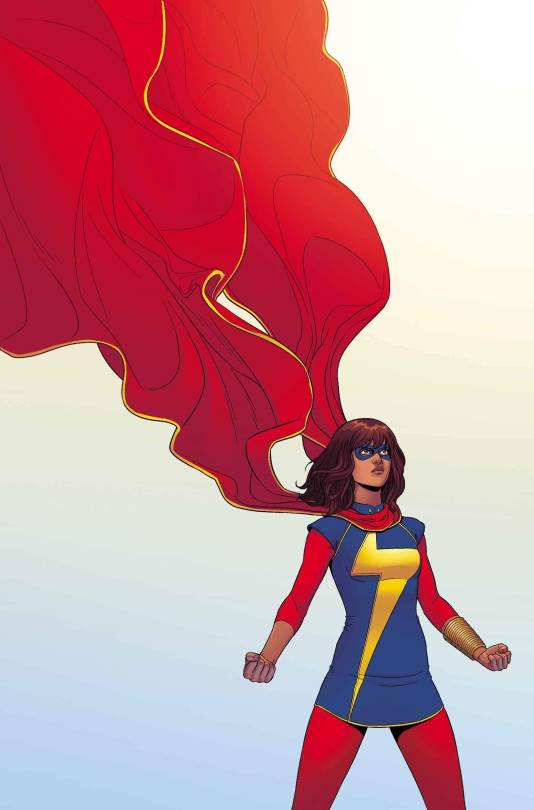

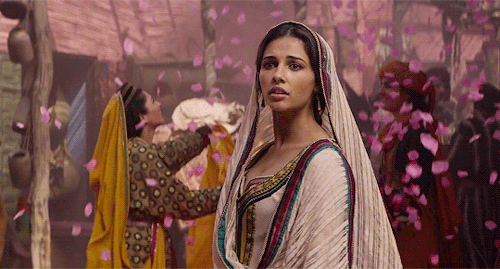
This isn't much of a recent trend either. Back in 2007-8 the Bratz Movie casted Ian Nelson (who is white) to play Dylan (who is black and had already been whitewashed in the cartoon and other media).
Great representation does not mean erasing brown/deep toned and unambiguous features to make characters more marketable. There is no shame in unambiguous features. Trying to erase such is doing the bare minimum and shows the unjustified colorism that still runs rampant in Hollywood.
#whitewashing#racism in media#film#animation#spirit stallion of the cimarron#anti spirit untamed#spirit untamed#mcu critical#kamala khan#princess jasmine#little creek#aladdin 2019#aladdin 1992#flora#winx club#terra#anti fate the winx saga#representation#diversity#disney#dreamworks#marvel#mcu#netflix#nonwhite#poc#kid's media#nostalgia
409 notes
·
View notes